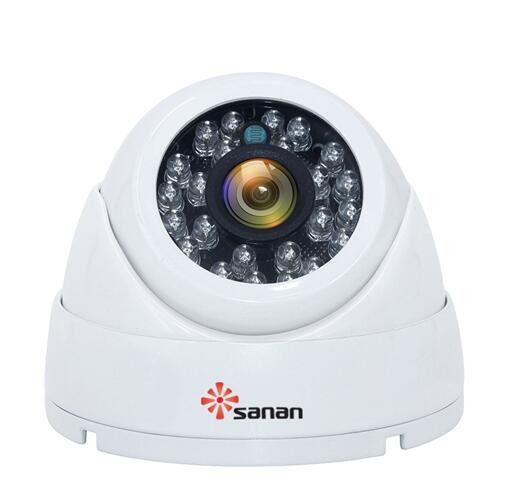Original form difference
1. Adenophora herbaceous perennial, stem height 40-80cm. Unbranched, often short stiff or villous. Basal leaves heart-shaped, large and long-stalked; stem leaves sessile, or only lower leaves with very short, winged stipes; leaf blade elliptic, narrowly ovate, base cuneate, 3-11 cm long, 1.5 -5cm. Apex acute or short acuminate, margin irregularly serrate, sparsely short hairs or long bristles on both surfaces, or nearly hairy. Inflorescences branching into pseudotubate inflorescences, or shortly branched into very narrow panicles, rarely with long branches forming panicles; pedicels less than 5mm in length; calyx often pubescent or granular Hair, few hairless, tube often obovate, a few conical-ovate, lobes 5, narrow, mostly drill-shaped, a few strips lanceolate; corolla broad bell-like, blue or purple, outside Hairless or bristly, lobes 5, triangular-ovate; disk shortly tubeulose, glabrous; stamens 5, expanded filaments distal to filaments, anthers slender; style often slightly longer than corolla, stigma 3-lobed, ovary inferior , 3 rooms. Capsule oval-shaped, rarely elliptic, 6-10mm long. Most of the seeds are brownish yellow, slightly flat, with 1 edge, about 1.5cm long. Flowering, fruiting period from August to October.
2. The difference between this species and Adenophora is that the stem leaves are sessile or only shortly cuspidate in the upper part of the stem, the base of the leaves are often wedge-shaped, and the basal leaves are long-handled. Inflorescences branch stout, almost flat or curved upward; calyx lobes ovate to long ovate, widest at middle and lower parts, often ± overlapping, 1.5-4 mm wide, disk versatile hairy, rarely glabrous; styles Corolla length. Flowering from July to September.
3. The difference between this species and the former two species is that leaves 3-6 rounds of growth, oval to linear lanceolate. Inflorescence branches also often borne; discs shorter, 2-4mm in length, and not more than 1mm in diam.; corolla small, nearly tube-shaped, slightly retracted at mouth, lobes ca. 2mm. Flowering from July to September.
4. The difference between this species and the former three species is that the stem leaves are evenly distributed on the stem; often without stalks, the leaves are oval to long ovate or obovate, sparsely shaggy above, densely bald below or only The veins are hardened. Pseudo racemes inflorescences; discs shortly tube-shaped, not exceeding 1 mm in length; 1-3 pairs of small teeth at calyx margins. Flowering from August to October.
5. The difference between this species and the first four species is that the stems often have dense inverted short bristles; stem leaves are sessile, very few have short wedge-shaped stipes; leaves oval, oblong, narrow oval And obovate, two coats, with 2 to several coarse teeth on the edge. Inflorescences usually branch at base; disk hairs; styles nearly as long as corolla. Flowering from July to October, fruiting from October to November.
We may have heard of the Dome Fixed Focus Camera/ Fixed Focus Dome Camera/ Fixed Focus Dome cameras/ Fixed Focus Digital Dome Camera/ Fixed Focus Dome Camera Amazon/ Fixed Focus Dome Camera CCTV, so what is the Dome Fixed Focus Camera? We know that the dome refers to the camera shape, so what about the Fixed Focus? Actually, the Fixed Focus refers to a type of the camera lens. Today let me introduce the camera lens for you.
Last time, I have introduced the camera lens and one classification for you. Today please let me introduce the 2nd classification for you---the classification according to the occasions.
1. The standard lens
The lens with the angle of view at about 50°(which is also the angle that a person can see without turning his head and eyes), is called the standard lens. The focal length of the 5mm camera's standard lens is mostly 40mm, 50mm or 55mm. The focal length of the 120 camera's standard lens is mostly 80mm or 75mm. The larger the CCD chip is, the longer the focal length of the standard lens will be.
2. The wide-angle lens
The wide-angle lens has the angle of view at above 90 degrees, which is suitable for shooting close and large-scale scenery, and can deliberately exaggerate the foreground to show a sense of perspective. The typical wide-angle lens of the 35mm camera has a focal length at 28mm and an angle of view at 72°. The 50mm, 40mm lens of the 120 camera is equivalent to the 35mm, 28mm lens of the 35mm camera.
3. The long focal length lens
The long focal length lens is suitable for shooting distant subjects. The small depth of field can easily make the background blurred and the subject stand out, but it is bulky and the difficult to focus on the dynamic subjects. The long focal length lenses of the 35mm camera are usually divided into three levels, 135mm or less is called the medium focal length, 135-500mm is called the long focal length, and above 500mm is called the super long focal length. The 150mm lens of the 120 camera is equivalent to the 105mm lens of the 35mm camera. The long focal length lens has the telephoto lens design because it is too bulky, that is, a negative lens is added to the lens behind , and the main plane of the lens is moved forward, then a shorter lens body can be used to obtain the long focal length effect.
4. The reflective telescope lens
The reflective telescope lens is another design of the super telescope lens, which uses a reflecting mirror to form an image. However, due to the design, the aperture can't be installed, and the exposure can be adjusted only through the shutter.
5. The Macro lens
The Macro lens can not only do the close-up macro photography, but also do the telephoto.

In conclusion, we can choose rake the angle of the view into consideration according to our needs, when we choose a Dome Fixed Focus Camera.
Fixed Focus Dome Camera, Fixed Focus Dome cameras, Fixed Focus Digital Dome Camera, Fixed Focus Dome Camera Amazon, Fixed Focus Dome Camera CCTV
SHENZHEN SANAN TECHNOLOGY CO.,LTD , https://www.sanan-cctv.com